The popularity of the Petty Girl changed not only Pin-Up art, but the concept of American Beauty. A beautiful woman with elongated limbs often dangling a telephone with a flirtatious smile, George Petty created a new fantasy for a new generation.
Learn more about George Petty original pin up art values: Read the bio, see past sale prices and bid on George Petty pin up art for sale.
George Petty was raised in Chicago around the turn of the century. He apprenticed at his father’s photographer studio before studying at the Académie Julian in Paris. Once he returned to the US, Petty made ends meet as a photo retoucher – where he learned the art of the airbrush. In the late 1920s, the artist opened his own studio creating advertisements for Marshall Fields and Atlas Beer. In the early 1930s, Petty also created Pin-Ups for Brown & Bigelow calendars (Fig. 1).
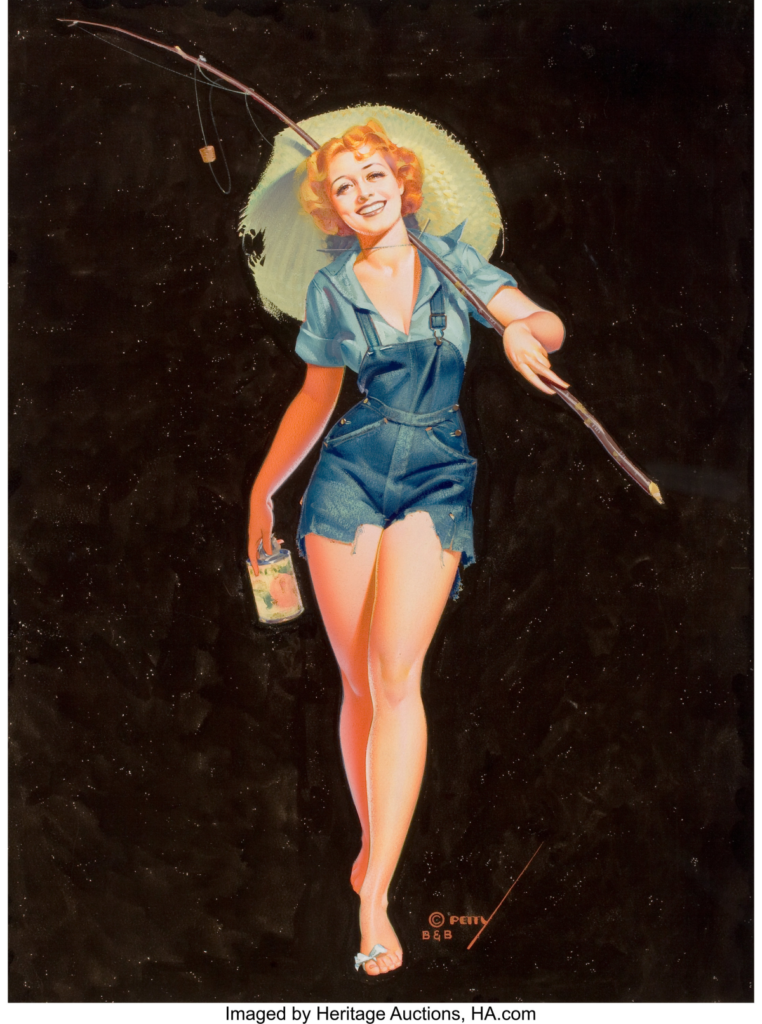
In 1933, George Petty won the poster competition for the Chicago’s World Fair to great acclaim (Fig. 2) However, it was not until George Petty began creating Pin-Ups for Esquire Magazine that his success became a cultural phenomenon.
What is pin up art? The term pin-up is rather straightforward. It refers to an image that an individual “Pin-Up” on their wall. However, the contemporary use of Pin-Up is closely related to another subject – one that “I know it when I see it.” Nevertheless, Pin-Up art has a rich history – one that skirts risqué and highlights cultural change within American societal and cultural norms. The term begins at the turn of the century with the burlesque scene and the golden age of print media.
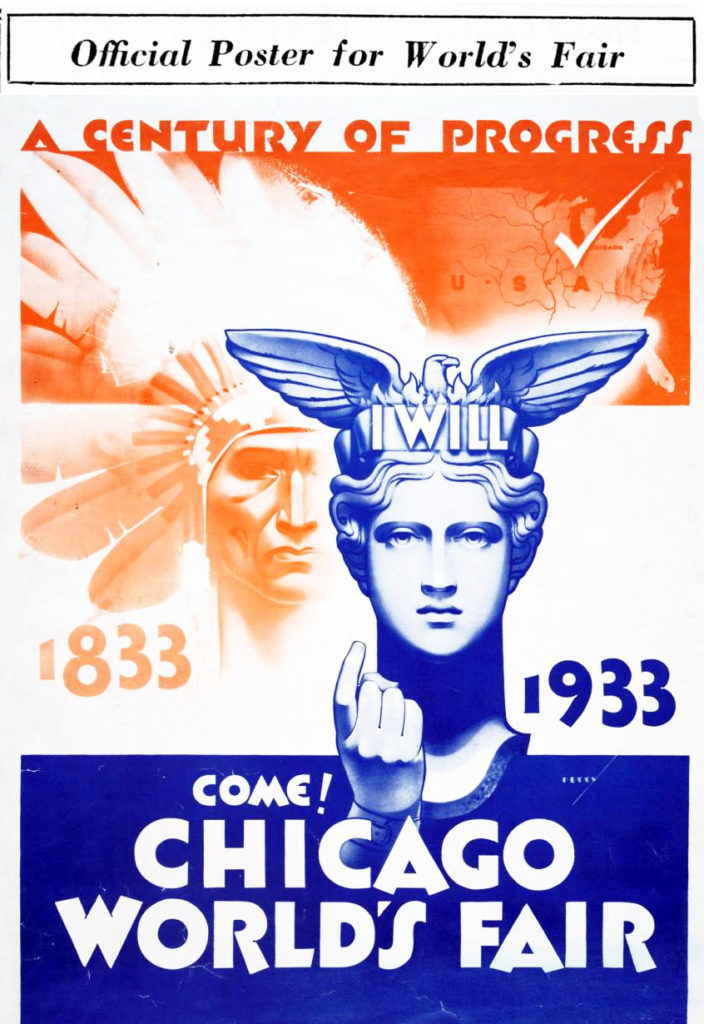
When did George Petty first paint the Petty Girl?
The Petty Girl made her first appearance in 1933 as a full-page cartoon in Esquire Magazine’s first issue (Fig. 3). The Pin-Up featured a long-legged female that was generously proportioned and often with a phone in hand (Fig. 4).
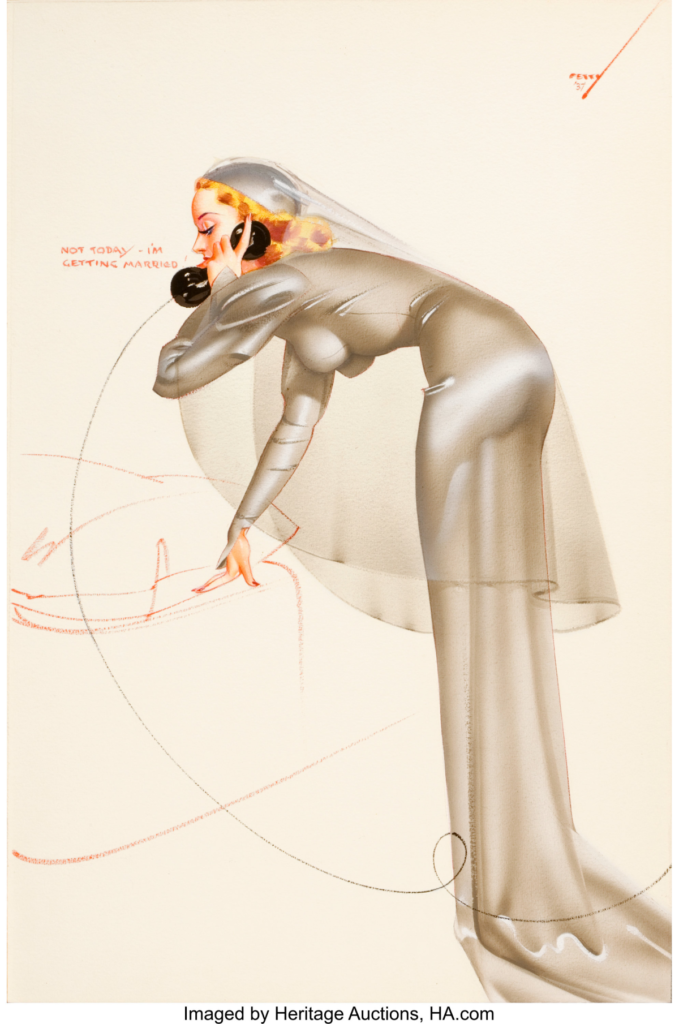
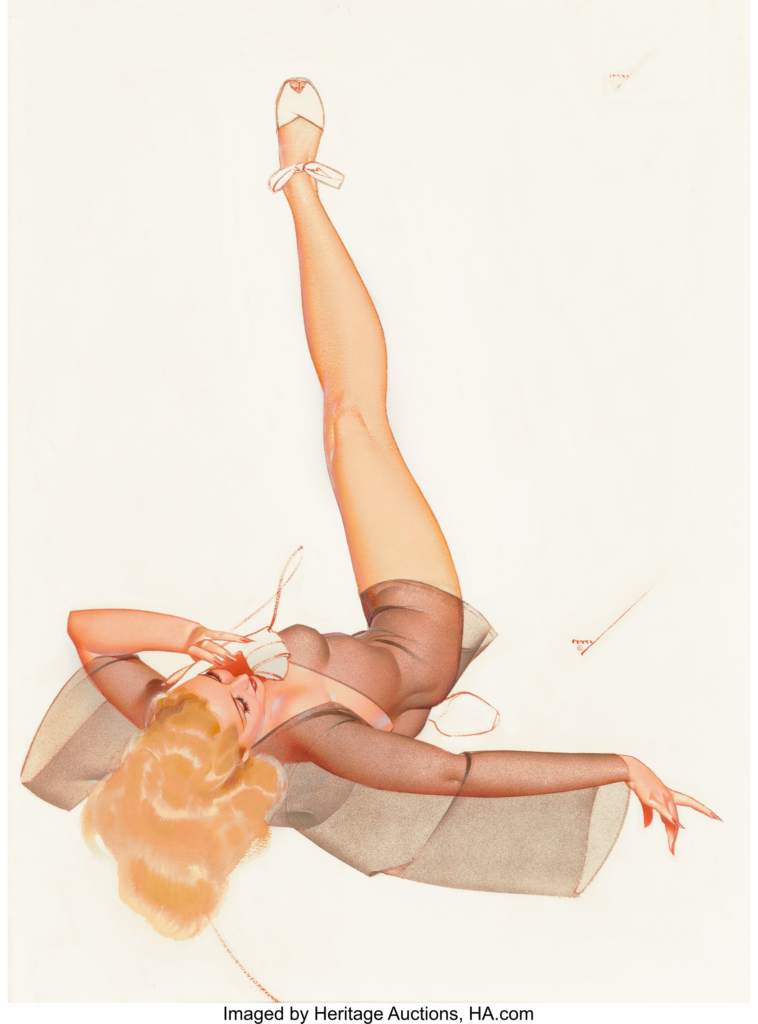
From there, George Petty’s creations were featured everywhere – cigarette cases, playing cards, advertisements from Knitting to Airlines. Life Magazine recalled the Petty Girl as the female ideal for American men and Esquire capitalized on the Petty Girl publishing calendars and various ephemera (Fig. 5).
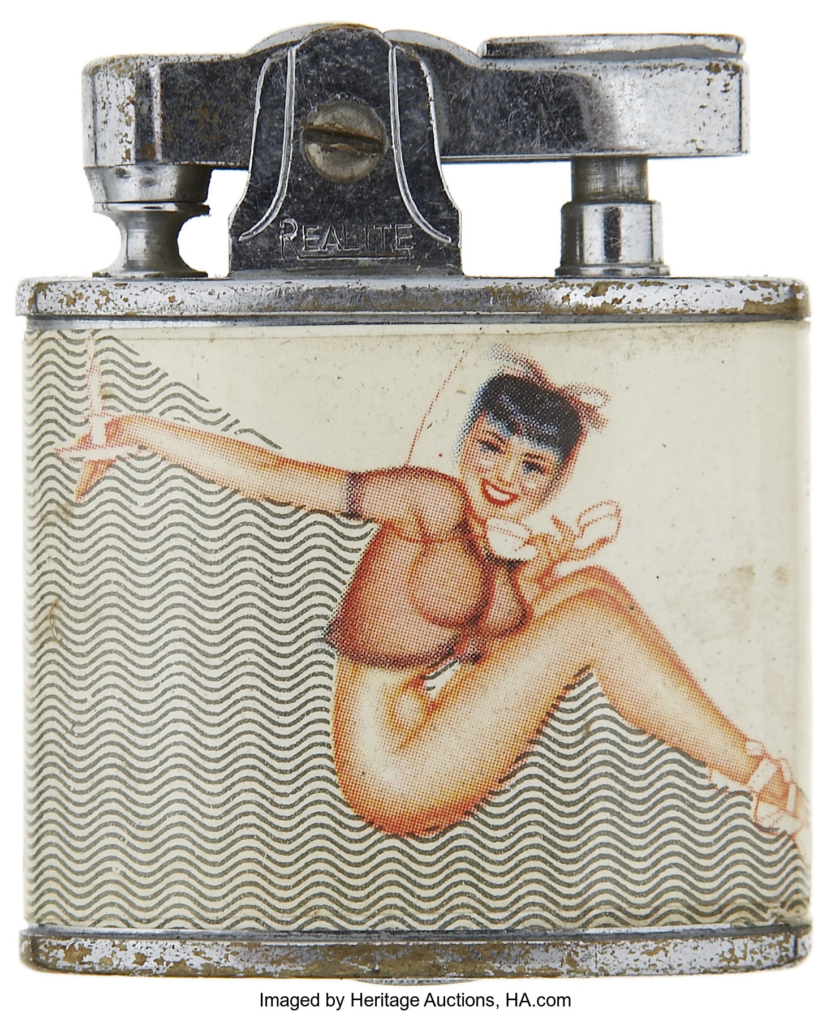
When Petty was replaced by Alberto Vargas in Esquire – the previous artist was able to keep the licensing and rights to the ‘Petty Girl’ name. Unlike many of his contemporaries, Petty cleverly kept the secondary licensing of all his images and demanded the return of the original artwork, receiving royalties on every use of his Petty Girl. It is telling that Esquire corrected this oversight in the contract with Vargas and his ‘Varga Girl.’ Nevertheless, Petty and Varga girls were seen in many a military barrack in World War II. The Memphis Bell, an American Flying Fortress that was one of the first to complete 25 combat missions, featured a Petty Girl on its nose as seen in the 1944 documentary film. In 1945, the artist accepted a contract with True Magazine where his Petty Girl was featured every month as a full-page or foldout (Fig. 6).
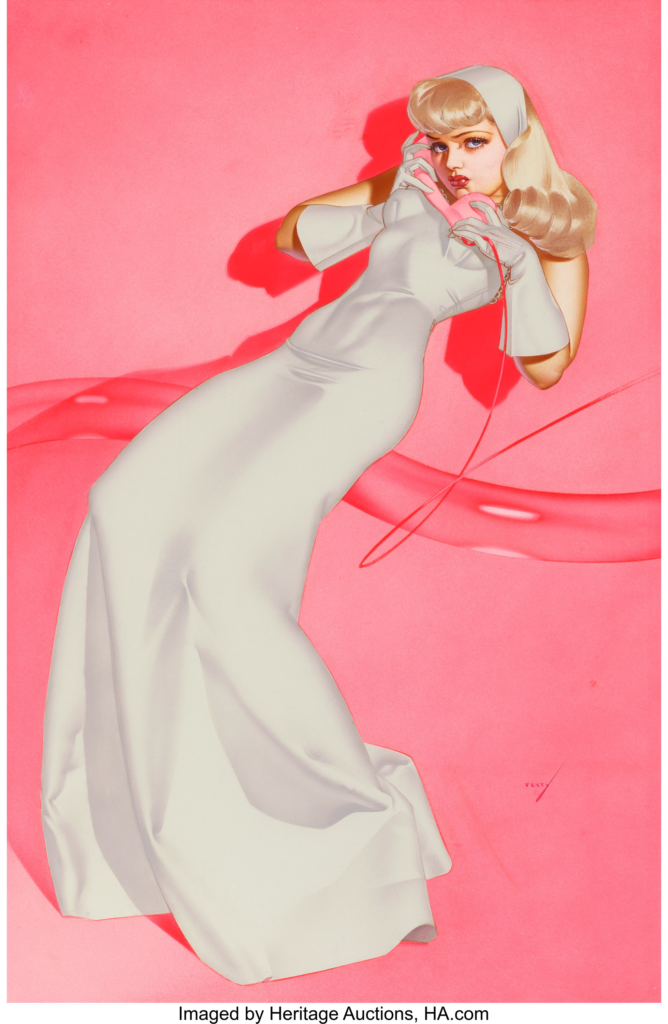
Due to his great Pin-Up success, George Petty expanded his portfolio to include ads for Pepsi Cola and even a Time Magazine cover featuring Rita Hayworth. He also created and designed swimsuits for Jantzen as well as their advertisements (Fig. 8) – clearly drawing inspiration from fellow illustrator Joseph Christian Leyendecker for the male figure.
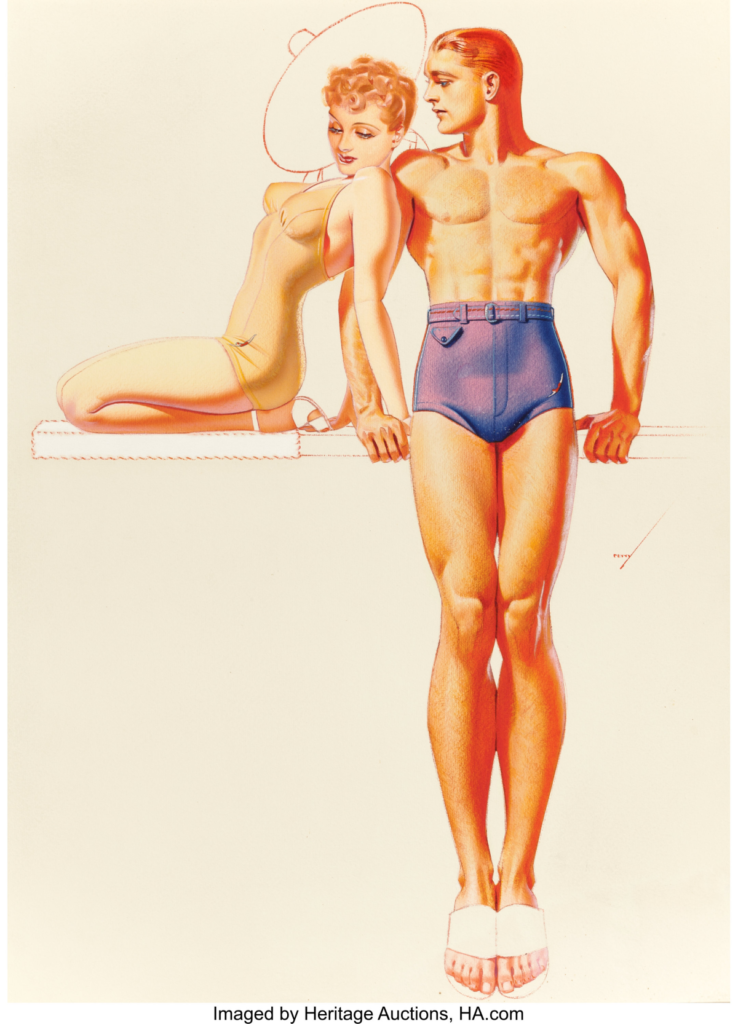
Another company Petty created advertisements for was Ridg Tool where he often utilized collage and composition unique to the artist (Fig. 9).
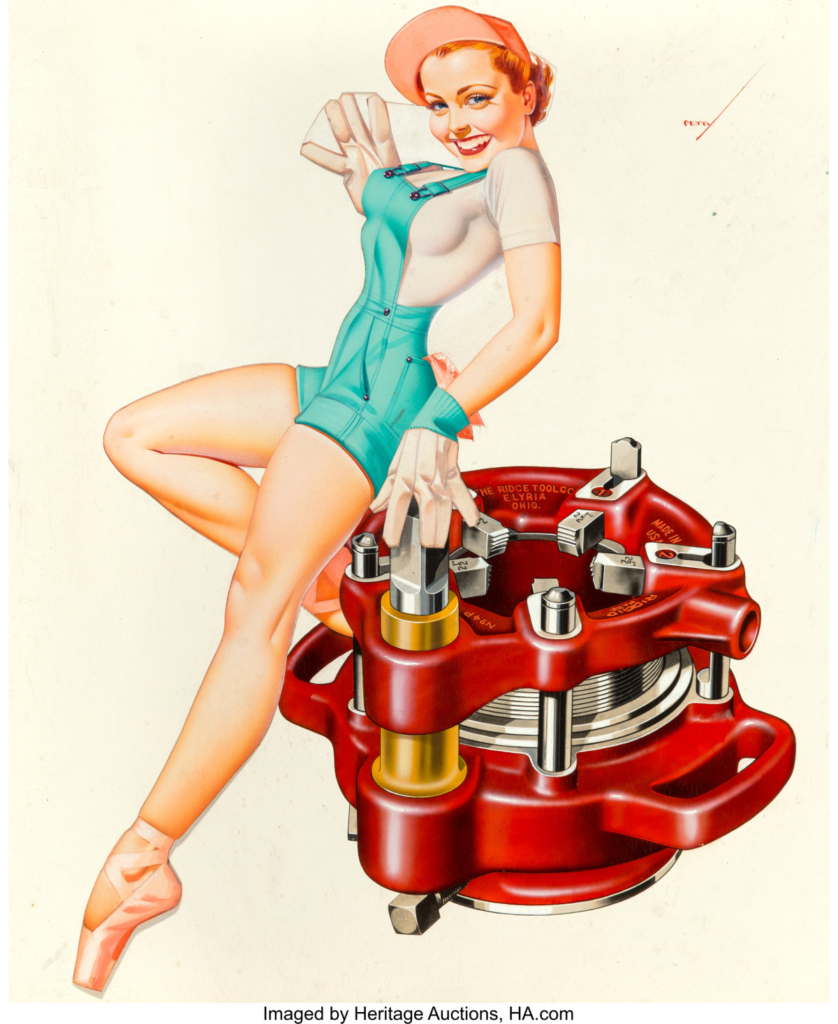
However, in 1950 the publicity of the Petty Girl reached new heights with a feature film starring Joan Caulfield and Robert Cummings playing the role of George Petty (Fig. 10). The artist would return to create two calendars for Esquire in 1955 and 1956 as well as a Pin-Up for the 40th anniversary issue in 1975.
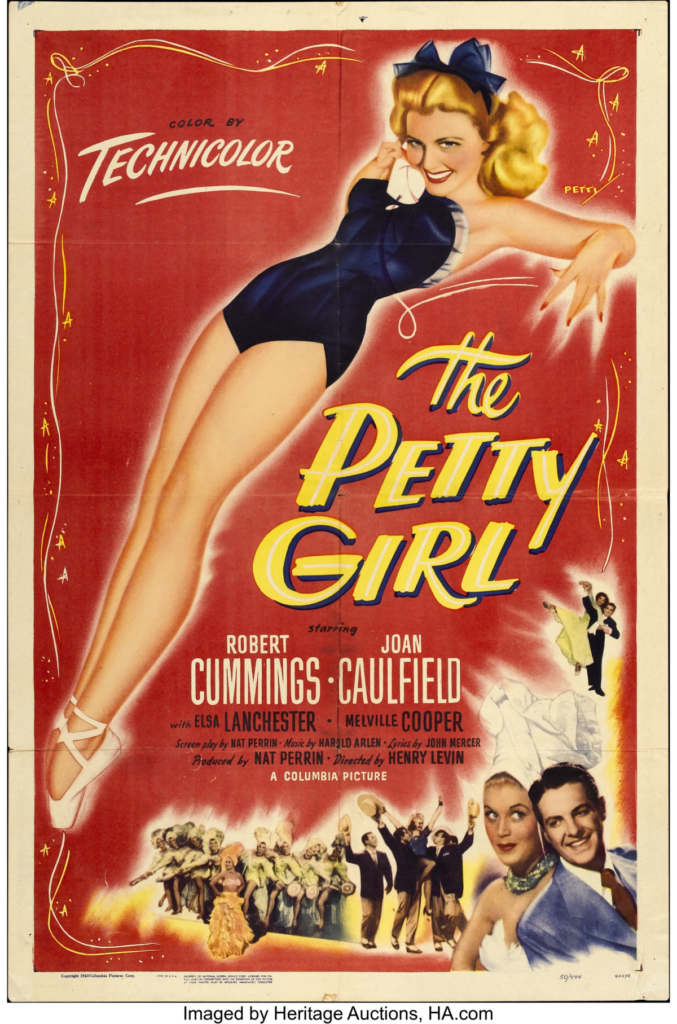
Tips for collecting George Petty original pin up art
- Petty often utilized collage: sometimes to correct mistakes or requested changes, sometimes to play with composition, and sometimes to add photostat images.
- Like Vargas and Elvgren, do not worry if there are condition issues to the background – expect pinholes or vestiges of old adhesive, writing in the margins – this artwork has a purpose. It doesn’t affect the value unless it distracts from the figure.
- While all Petty Girls have value – if you are looking to capitalize get one with a phone in hand, see through clothing, and a flirtatious smile.
- Exempting a few exceptions, the more filled in background and the more clothes on the figure – the earlier the Petty work.
Learn more about collecting fine art
Get art collecting news, auction recaps and sneak previews when you subscribe to the Heritage Auctions Fine Art newsletter.
- View and bid on fine art for sale.
- What’s your art worth? Lookup the value in our fine art auction archives.
- Ready to sell? Get a Free Auction Evaluation – Generous cash advances available.
Free Offer – The Collector’s Handbook
Protect your investment. Download a free copy of The Collector’s Handbook – your step-by-step guide for documenting and safeguarding your collection.


Do you know anything about Petty Girl Pools? I grew up in OC in the 1960s and the pool in the back was a Petty girl pool. I have the original tile (damaged) and am trying to find out more about the company. thanks,